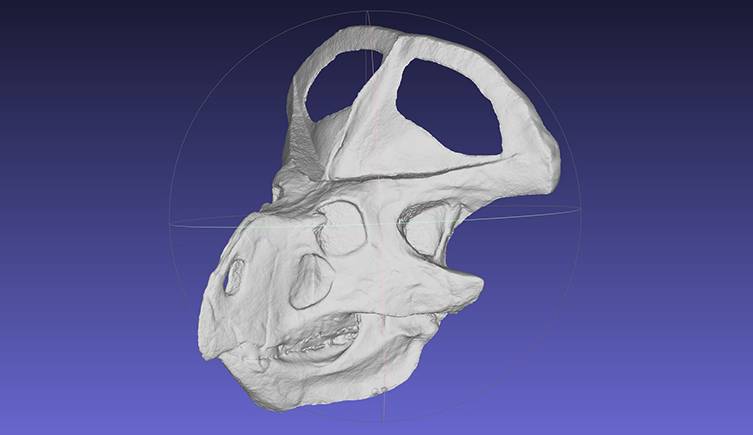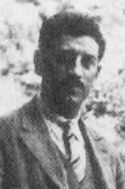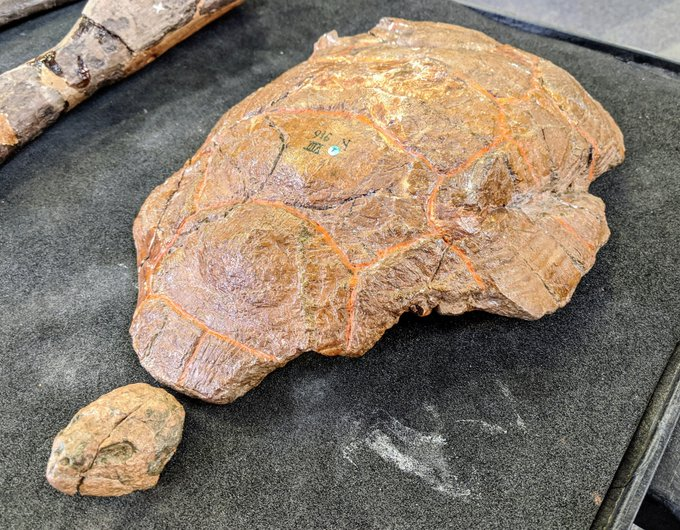The question of sex in dinosaurs is complex.
A cool new study from @NHM_London has been unravelling whether or not male & female dinos looked the same.
But this subject has a long history, and one that is just a little bit queer
queer : a thread #LGBTHM21
: a thread #LGBTHM21  https://www.nhm.ac.uk/discover/news/2021/february/dinosaur-frills-were-likely-the-result-of-sexual-selection.html
https://www.nhm.ac.uk/discover/news/2021/february/dinosaur-frills-were-likely-the-result-of-sexual-selection.html
A cool new study from @NHM_London has been unravelling whether or not male & female dinos looked the same.
But this subject has a long history, and one that is just a little bit
 queer
queer : a thread #LGBTHM21
: a thread #LGBTHM21  https://www.nhm.ac.uk/discover/news/2021/february/dinosaur-frills-were-likely-the-result-of-sexual-selection.html
https://www.nhm.ac.uk/discover/news/2021/february/dinosaur-frills-were-likely-the-result-of-sexual-selection.html
So this study is really neat, in that it has used modern techniques and analysis to map the rate of change in different parts of the skulls of a ceratopsian dinosaur.
These dinosaurs are best known for their big horns and fancy neck frills, think of the iconic Triceratops. 2/
These dinosaurs are best known for their big horns and fancy neck frills, think of the iconic Triceratops. 2/
The dinosaur that was looked at here, however, was one ‘around the size of a large sheep’ called Protoceratops.
This is probably where the similarities end, as these ovine-sized dinos had long tails and huge beaked skulls.
( @KnappRew) 3/
@KnappRew) 3/
This is probably where the similarities end, as these ovine-sized dinos had long tails and huge beaked skulls.
(
 @KnappRew) 3/
@KnappRew) 3/
More importantly, they also had one of those fancy neck frills. It has been suggested that these frills were used for all sorts of things, from defense to thermoregulation.
But it has also been suggested that they were an example of sexual selection. 4/
But it has also been suggested that they were an example of sexual selection. 4/
Generally speaking this is when animals evolve certain traits - imagine those silly long feathers of birds-of-paradise - as a result of one sex thinking that they are irresistible in the other.
This is where things start to get a little queer. #LGNTHM21 5/
This is where things start to get a little queer. #LGNTHM21 5/
Let’s jump back 144 years to Transylvania in what was then Austria-Hungary to meet this guy: Franz Nopcsa von Felső-Szilvás.
#LGBTHM21 6/ https://www.nhm.ac.uk/discover/franz-nopcsa-the-dashing-baron-who-discovered-dwarf-dinosaurs.html
6/ https://www.nhm.ac.uk/discover/franz-nopcsa-the-dashing-baron-who-discovered-dwarf-dinosaurs.html
#LGBTHM21
 6/ https://www.nhm.ac.uk/discover/franz-nopcsa-the-dashing-baron-who-discovered-dwarf-dinosaurs.html
6/ https://www.nhm.ac.uk/discover/franz-nopcsa-the-dashing-baron-who-discovered-dwarf-dinosaurs.html
Born into aristocracy, Nopcsa became interested in dinosaurs when his sister found fossils in the grounds of the family estate.
This led to him becoming one of the most prolific palaeontologists of his time, publishing 150+ papers on the geology and dinos of eastern Europe. 7/
This led to him becoming one of the most prolific palaeontologists of his time, publishing 150+ papers on the geology and dinos of eastern Europe. 7/
His aristocratic life also allowed him another freedom, to be an openly gay man at a time it was still very much illegal.
He had a long-term partnership with Bajazid Elmaz Doda. #LGBTHM21 8/
8/
He had a long-term partnership with Bajazid Elmaz Doda. #LGBTHM21
 8/
8/
While Nopcsa’s diaries don’t mention his relationship much at all, he was clearly very fond of Bajazid, as he named a new species of fossil turtle Kallokobotion bajazidi.
This translates as ‘the beautiful box of bajazid’.
Bajazid must have been thicc

 #LGBTHM21
#LGBTHM21  9/
9/
This translates as ‘the beautiful box of bajazid’.
Bajazid must have been thicc


 #LGBTHM21
#LGBTHM21  9/
9/
But Nopcsa wasn’t only prolific, he pushed the boundaries of scientific understanding.
While most palaeontologists at the time were focused on the bones of dinosaurs, he became one of the first to actually start thinking about them as living, breathing animals.
Radical! 10/
While most palaeontologists at the time were focused on the bones of dinosaurs, he became one of the first to actually start thinking about them as living, breathing animals.
Radical! 10/
As part of this thought process he started thinking about how dinosaurs would have behaved, including how male and female animals may have looked.
He even looked at, you guessed it, ceratopsian dinosaur frills! 11/
He even looked at, you guessed it, ceratopsian dinosaur frills! 11/
Nopcsa was looking at all the frilled dinosaurs being dug up in the US at the time, many during the Bone Wars - including Triceratops! - and thought that he could match up males and females based on the differences in the horns and frills. 12/
Now, it turns out that Nopcsa’s pairings were, well, let’s just say they weren’t exactly correct.
BUT! He set an important precedent, and ushered in this important line of thought! 13/
BUT! He set an important precedent, and ushered in this important line of thought! 13/
(Incidentally, Nopcsa was also the first to suggest that dinosaurs may have displayed parental care, an idea that wouldn’t really take off or be proven for another 100 years or so) 14/
That wasn’t all Nopcsa worked did, though.
He had a deep love for Albania, becoming the first outsider to travel and document the remote northern mountains, armed the Albanian revolution against the colonial Ottoman Empire and then offered himself up to become their king. 15/
He had a deep love for Albania, becoming the first outsider to travel and document the remote northern mountains, armed the Albanian revolution against the colonial Ottoman Empire and then offered himself up to become their king. 15/
He also became a spy during World War I, using his knowledge of the region's geography to sneak around unnoticed.
In the process became the first person to hijack a plane when he got trapped in Romania after it took control of Transylvania and needed to escape. 16/
In the process became the first person to hijack a plane when he got trapped in Romania after it took control of Transylvania and needed to escape. 16/
ANYWAY I’m sorry, we have to go back to the dinosaurs.
Lots of people since have tried their best to sex dinosaurs, by looking at eggs or tissue found inside the bones.
None of these have been conclusive, and I talked to @NHMdinolab about this. 17/ https://www.nhm.ac.uk/discover/how-to-sex-a-dinosaur.html
Lots of people since have tried their best to sex dinosaurs, by looking at eggs or tissue found inside the bones.
None of these have been conclusive, and I talked to @NHMdinolab about this. 17/ https://www.nhm.ac.uk/discover/how-to-sex-a-dinosaur.html
As science moves on, so does the technology!
By using 3D scans and then some fancy-complicated analysis, this new research is giving us a much greater insight into how Protoceratops skulls grew and evolved. 18/
By using 3D scans and then some fancy-complicated analysis, this new research is giving us a much greater insight into how Protoceratops skulls grew and evolved. 18/
Mapping over 30 skulls ranging in age from hatchlings to adults, they were able to see how the frills changed shape as they grew, both in relation to their age but also to other parts of their own skull. 19/
They found that the frills of Protoceratops showed a greater rate of change, in terms of their growth and shape, when compared to other parts of their skulls.
In living animals, some of these patterns are almost always found in features that are sexually selected for. 20/
In living animals, some of these patterns are almost always found in features that are sexually selected for. 20/
This is cool!
This shows that the massive frills of ceratopsians likely evolved as a result of social interactions between individuals of the same species. 21/
This shows that the massive frills of ceratopsians likely evolved as a result of social interactions between individuals of the same species. 21/
Now, they can’t say for certain whether or not it is *precisely* due to sexual selection because, well, we can’t exactly go back and see if those with the biggest, flashiest frills boned the most. 22/
But this is where sexual selection gets complicated anyway.
It is not really as simple as horns getting the most guys (or girls), as these sorts of features may have had other non-sexy time related functions, such as defending food or water. 23/
It is not really as simple as horns getting the most guys (or girls), as these sorts of features may have had other non-sexy time related functions, such as defending food or water. 23/
They think that the frill therefore likely evolved in order to emphasize the body size of an individual, which was probably related to sexual selection.
So this really awesome study has used modern tech to help prove an old queer (sort of) right. #LGBTHM21
#LGBTHM21 
24/24
So this really awesome study has used modern tech to help prove an old queer (sort of) right.
 #LGBTHM21
#LGBTHM21 
24/24
Finally, a HUGE thanks to @KnappRew for talking to me about this!
And to @Dave_Hone and @RobKnell1 who were also involved!
The full paper, if you fancy it, is here:
https://royalsocietypublishing.org/doi/10.1098/rspb.2020.2938#.YBpeMSbbyko.twitter
And to @Dave_Hone and @RobKnell1 who were also involved!

The full paper, if you fancy it, is here:
https://royalsocietypublishing.org/doi/10.1098/rspb.2020.2938#.YBpeMSbbyko.twitter

 Read on Twitter
Read on Twitter




